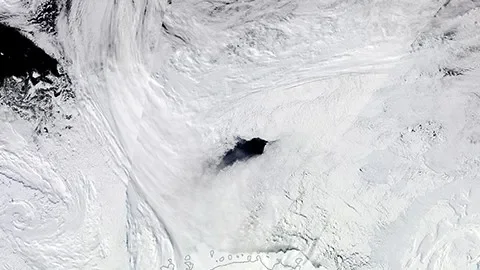
Antarctic ice hole the size of Switzerland keeps cracking open. Now scientists finally know why | Travel News
Researchers have finally unraveled the mystery behind the recurrent appearance of a hole in Antarctica's sea ice, equivalent in size to Switzerland.
Known as the Maud Rise polynya, this phenomenon was first observed in the Weddell Sea in 1974 and 1976 and has intermittently reappeared since then, sometimes vanishing for years. In 2016 and 2017, a massive 309,000 square mile (80,000 square kilometers) opening emerged for several weeks during both winters, allowing scientists to delve deeper into its nature and solve the enigma that had puzzled them for five decades. Their findings were published in the journal Science Advances on Wednesday, May 1.
Lead author Aditya Narayanan, a postdoctoral researcher at the University of Southampton in England, noted that 2017 marked the first instance since the 1970s of such a large and long-lasting polynya in the Weddell Sea.
The formation of polynyas—holes in the sea ice—typically occurs when strong inland winds push the ice apart, allowing more seawater to freeze inside. However, the Maud Rise polynya forms away from these coastal winds, raising questions about the specific conditions responsible for its occurrence.
To unravel this mystery, researchers analyzed data from satellites, autonomous floats, tagged marine mammals, and previous observations. They discovered that during 2016 and 2017, the Weddell Sea's circular ocean current, known as the Weddell Gyre, was unusually strong, facilitating the movement of salt and heat closer to the surface.
Located near the Maud Rise, an underwater mountain, the polynya benefited from this stronger current, which brought salt to the surface, lowering the freezing point of the water and allowing the polynya to form and persist.
This new understanding of the Maud Rise polynya's formation is crucial for comprehending Antarctica's role in the global ocean system. Climate change is intensifying winds from Antarctica, potentially leading to more frequent occurrences of polynyas in the future. Given that 40% of the global ocean's waters originate from the Antarctic coastline, understanding these phenomena is vital for regulating climates worldwide.
Study co-author Sarah Gille, a professor of climatology at the University of California San Diego, emphasized that polynyas can significantly influence ocean currents and heat distribution, with their impact persisting for years after formation.
